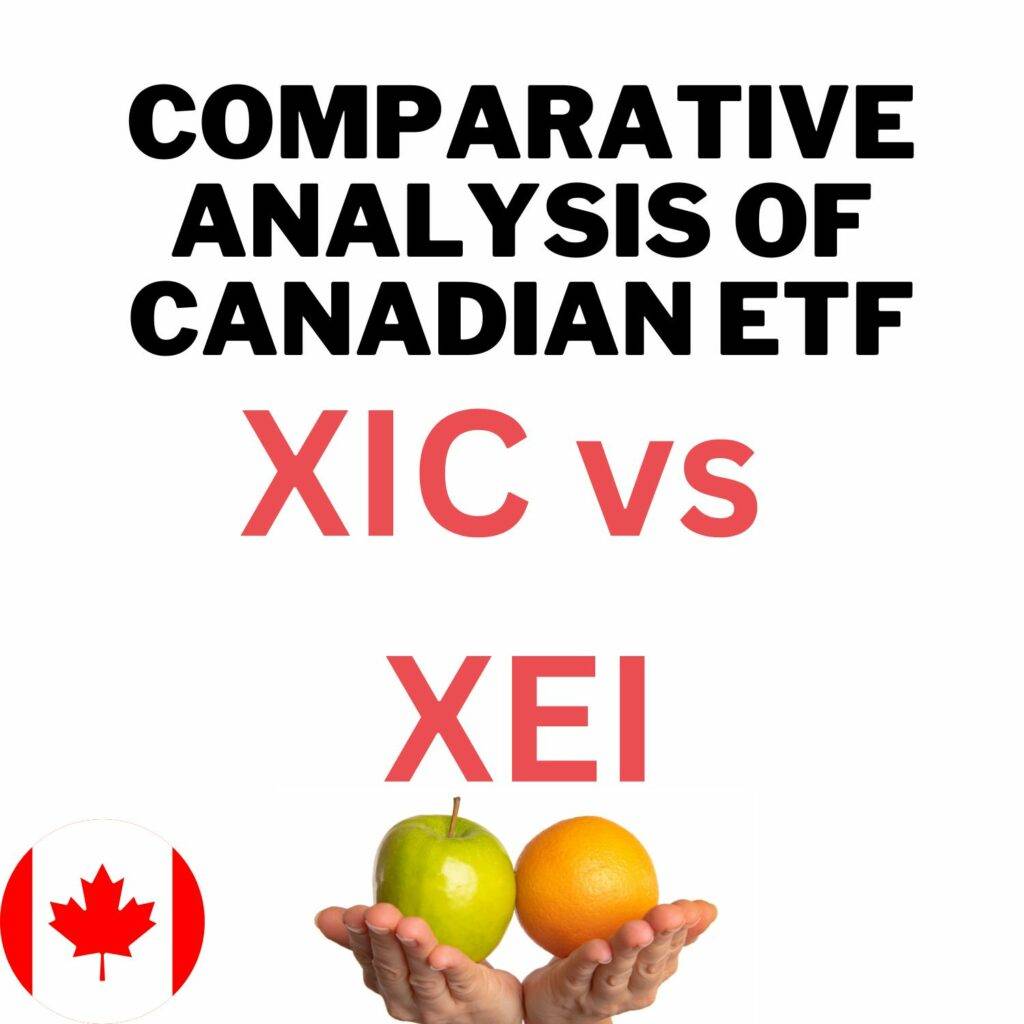In evaluating the differences between two well-known Canadian Exchange-Traded Funds (ETFs), namely XIC and XEI, it’s essential to delve into the distinct features each one presents. These ETFs are tailored to cater to varying investment strategies and objectives. Let’s explore the nuances in the XIC vs XEI comparison:
1. Fund Overview and Composition
[stock_market_widget type=”table-quotes” template=”color-header-border” color=”#5679FF” assets=”XIC.TO,XEI.TO” fields=”symbol,name,fund_inception_date,net_assets” display_header=”true” display_chart=”false” search=”false” pagination=”false” scroll=”false” rows_per_page=”5″ sort_direction=”asc” alignment=”left” api=”yf”]
The XIC ETF, known as the iShares Core S&P/TSX Capped Composite Index ETF, is specifically designed to track the S&P/TSX Capped Composite Index. This focus provides investors with exposure to a wide array of large-cap stocks in Canada, encapsulating a substantial portion of the Canadian equity market. Its diversified approach spans various sectors, effectively mirroring the composition and performance of the Canadian stock market. This diversification aims to offer a balanced representation of the Canadian economy, making it a suitable choice for investors seeking comprehensive market exposure.
On the other hand, the XEI ETF, or the iShares S&P/TSX Equity Income Index ETF, has a different focus. It tracks the S&P/TSX Equity Income Index, which targets companies known for their high dividend yields. The XEI ETF has a tendency to concentrate more on specific sectors, particularly financials and energy. These sectors are traditionally known for paying higher dividends. This concentration means that while the XEI offers the potential for higher income through dividends, it may also exhibit different risk characteristics compared to a more diversified ETF. The focus on high-dividend-yielding sectors makes it appealing to investors who prioritize income generation, specifically from dividends, in their investment strategy.
2. Performance and Returns XIC vs XEI
[stock_market_widget type=”table-quotes” template=”color-header-border” color=”#5679FF” assets=”XIC.TO,XEI.TO” fields=”symbol,ytd_return,three_year_average_return,five_year_average_return” display_header=”true” display_chart=”false” search=”false” pagination=”false” scroll=”false” rows_per_page=”5″ sort_direction=”asc” alignment=”left” api=”yf”]
The XIC ETF is designed to offer investors insight into the Canadian stock market’s overall performance. It acts as a barometer, reflecting the broader trends and health of the Canadian economy. By mirroring the performance of a wide range of companies across Canada, it provides a comprehensive snapshot of the market’s state.
On the other hand, the XEI ETF is tailored to track the performance of companies known for their profitability and robust dividend-paying ability. The focus on high-dividend-paying stocks, however, means that the XEI can be subject to more volatility. This is because its performance is closely tied to the financial health and dividend distribution strategies of its constituent companies, which can fluctuate based on various economic factors.
3. Dividends and Yield
- XIC
- Offers moderate dividend yields.
- Dividends are typically consistent with the broader market average.
- XEI
- Known for higher dividend yields.
- Attractive for income-focused investors.
4. Risk and Volatility XIC vs XEI
The XIC ETF typically demonstrates a level of risk and volatility that is comparable to the broader market. It’s an appropriate choice for investors who aim to replicate the risk-return profile of the Canadian stock market as a whole. This ETF mirrors the market’s fluctuations, making it suitable for those looking to have a general market exposure that reflects the ups and downs of the Canadian economy.
In contrast, the XEI ETF is often associated with a potentially higher level of risk, primarily due to its focus on sectors that pay high dividends. The concentration in these high-dividend sectors means that its volatility can be significantly influenced by the performance of specific industries. As such, the XEI’s performance can fluctuate more than a broader market ETF, especially if the sectors it focuses on are experiencing economic stress or industry-specific challenges. This makes it a more suitable option for investors who are comfortable with higher risk levels in exchange for the potential of greater rewards from these dividend-rich sectors.
5. Expense Ratios and Fees
- XIC (MER = 0.06%)
- Typically has a lower expense ratio.
- More cost-effective for investors focused on long-term, broad-market exposure.
- XEI (MER = 0.22%)
- May have a slightly higher expense ratio due to its specialized strategy.
- The cost can be a consideration for cost-conscious investors.
6. Investment Suitability
- XIC
- Well-suited for investors seeking broad exposure to the Canadian market.
- Ideal for a core portfolio holding.
- XEI
- More suitable for investors seeking higher income and who are comfortable with sector-specific risks.
- Can be used as a complementary holding to diversify income sources.
Conclusion
Choosing between XIC and XEI depends on your investment objectives, risk tolerance, and preference for income versus total return. XIC offers broad market exposure, making it a solid choice for investors seeking a diversified portfolio reflective of the Canadian market. In contrast, XEI is more suited for those focused on income, willing to accept higher risk from sector concentration. Both ETFs have their merits, and the choice largely hinges on individual investment strategies and goals.

